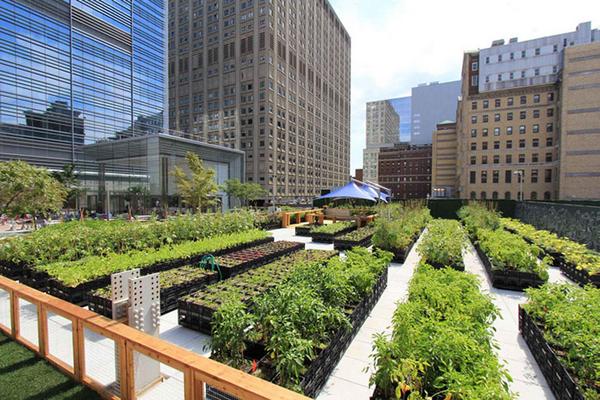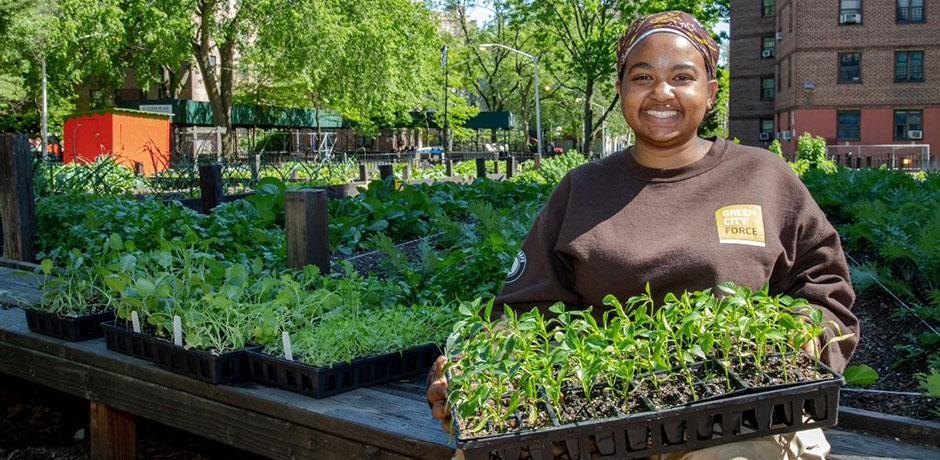The Buzz on City Blooming
The Buzz on City Blooming
Blog Article
The 10-Minute Rule for City Blooming
Table of ContentsWhat Does City Blooming Do?The Only Guide for City BloomingGet This Report on City BloomingCity Blooming Things To Know Before You BuyCity Blooming Can Be Fun For Anyone
Fascinated in growing food available for sale in the City of Chicago? Believing regarding starting a community garden? Adjustments to the Chicago Zoning Ordinance enable agricultural uses like community yards and metropolitan farms in many components of the city. Below is a checklist of regularly asked concerns relating to the regulations and regulations that cultivators ought to consider when intending a metropolitan farming project.
The zoning modification does not change any kind of other codes managing composting, structure authorizations, buying or leasing City possessed home, service licenses or environmental contamination. There are existing codes that regulate these concerns and they remain completely impact and might be suitable to your job. Community gardens are generally possessed or taken care of by public entities, public organizations or community-based companies and preserved by volunteers.
Urban farms expand food that is planned to be sold, either on a nonprofit or for-profit basis. Due to their industrial objective, metropolitan ranches need a business license.
Some Ideas on City Blooming You Should Know
The amount of garden compost material can not surpass 25 cubic lawns at any type of offered time according to the standards in 7-28-715 of the City's Municipal Code. Because the dirt at the majority of brand-new yard websites requires modifying, garden compost, soil, wood chips, or various other materials can be acquired to create or boost the expanding space.

If a building license is needed after that the hoophouse will be thought about an accessory building. You can figure out even more concerning the building license demands by getting in touch with the Department of Structures. The 25,000-square-foot dimension limitation is planned to protect against a solitary neighborhood garden from dominating an offered block or interfering with the block's existing property or business character.
The limitation does not put on yards situated in Public Open Area (POS) districts. Can there be greater than one area yard that is 25,000 square feet on a single block? Yes. The dimension limitation relates to individual yards, not to specific blocks. No. Fencing is not called for, nonetheless, gardens that have big parking lot may be needed to install secure fencing or various other landscaping functions.
8 Simple Techniques For City Blooming
B1 & B2 areas call for that all commercial usage tasks be conducted inside your home. R areas restrict commercial task. The policies show the purpose and intent of the Zoning Code. Is fence required for city ranches? Yes. Fencings might be required, along with landscaping and screening, for sure parking lot and outside work or storage locations depending on location and the details task happening.
Urban farms call for building permits and zoning approvals prior to building (garden care). Various other kinds of city evaluation may be called for depending on details structures, tasks, dimension, landscape design, licensing, public health and stormwater administration problems.
Yes. The kind of license is figured out by what is occurring at the site. The Division of Business Matters and Consumer Security can assist identify the certain kind of business license that's called look what i found for. Yes. Off road car parking is required for many commercial tasks in Chicago. The required variety of vehicle parking spaces is based upon the variety of workers working on website and not the square video footage of the expanding room.
The Buzz on City Blooming

Yes. A city farm can market garden compost material produced on site, nonetheless, the operation needs to adhere to the guidelines in 7-28-715 of the Chicago Municipal Code. Yes. Aquaponic systems are allowed indoors on metropolitan farms in several zoning districts. A zoning testimonial and building permit is required in order to mount structures or systems and a business permit is required as defined above.
As much as 5 hives or colonies of honey bees may be kept as an accessory usage. Beekeepers should sign up with the Illinois Division of Agriculture. To learn more concerning the proposed zoning change you may speak to the Division of Real Estate and Economic Growth, Bureau of Planning and Zoning at 312.744.8563.
Farming in cities and metropolitan locations A city farm in Chicago. Urban farming refers to various practices of growing. https://www.find-us-here.com/businesses/City-Blooming-San-Francisco-California-USA/34090046/, handling, and distributing food in metropolitan locations. The term additionally puts on the location activities of animal husbandry, aquaculture, beekeeping, and cultivation in a metropolitan context. Urban agriculture is differentiated from peri-urban agriculture, which occurs in backwoods beside residential areas.
A Biased View of City Blooming
It can include an activity of organic cultivators, "foodies" and "locavores", that look for to create social networks based on a shared values of nature and area holism. These networks can create by way of official institutional assistance, coming to be integrated into regional town preparation as a "change community" motion for lasting city growth.
The extra straight accessibility to fresh veggie, fruit, and meat items that might be understood with city farming can enhance food safety and food safety and security while lowering food miles, leading to reduced greenhouse gas discharges, thus adding to environment change mitigation. Some of the initial evidence of urban farming comes from Mesopotamia.
Report this page